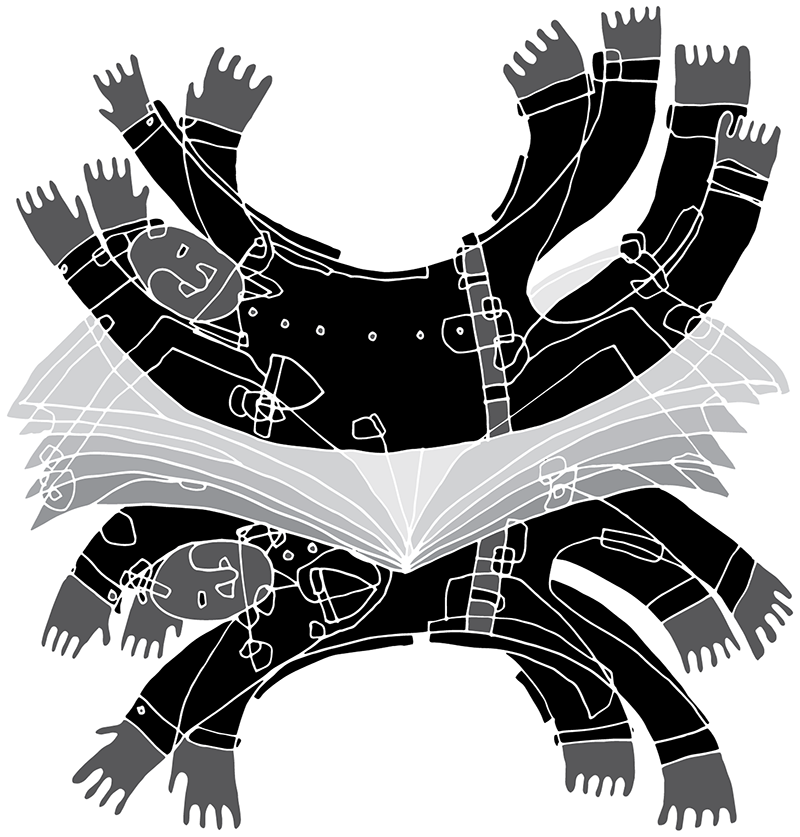
I studied editorial illustration throughout college—drawing was my first love—but by the time I approached graduation, my heart had begun to wander. Over the next dozen-plus years, I chased every creative discipline that piqued my interest. I only realized recently that graphic design has been my common denominator—the ever-changing puzzle that I never grow weary of solving. Milton Glaser often stresses the importance of drawing in a designer’s practice—drawing as a way of knowing. Drawing’s lens has long curved my worldview, and I hold Milton in the highest possible regard, but I’ve come to believe that writing and reading are even more important to a designer’s perspective. Writing and reading foster empathy for the writers and readers who bookend the work of designers. Graphic design is primarily concerned with shaping the language of writers for readers, and to my mind, that concern qualifies it as a literary discipline.
Literary (adj.). Etymology: 1640s, “pertaining to alphabet letters,” from French littéraire, from Latin literarius/litterarius “belonging to letters” from littera/litera “alphabetic letter.”
Some might reply that authorship is core to their own definition of a literary discipline. Indeed, every act of authorship is the domino that topples the chain. While directing the design of two imprints for a midsize book publisher, I’ve been privileged to meet many visionary authors. But I’ve known just as many creatively brilliant editors. And by “creatively,” I do mean that they create. Editors bring form to a writer’s words like a sculptor brings form to stone. The editor’s craft calls for social intelligence—a complex political exercise in co-creation. Most of the time, editors have no authorship over the words they shape, but I have no qualms about qualifying their work as literary.
Somehow, great editors ask the right questions or pose things to you that get you to write better. It’s a dance between you, your characters, and your editor. —Newbery Award winning author, Patricia MacLachlan
If we can first agree that editing language is a literary discipline, then the idea that designing language is also literary becomes easier to digest. Swapping the subject in the previous paragraph does not impair its logic: “[Designers] bring form to a writer’s words like a sculptor brings form to stone.” The best designers add new layers of meaning to the text they shape—they’re capable of imbuing the immediacy of a single word with narrative. Writers, editors, and designers speak the same language and that language is language. Conversely, and contrary to popular belief, designers have less in common with the fine artists they get lumped with in art school.
I recently wrote a short piece about the inaccuracy of the title “art director.” In it I observe that, culturally speaking, design is not art. Nudging that observation further, I’d like to suggest that graphic design departments might fit better within the writing and literature programs of liberal arts schools. That said, the history of design education is long enough that its traditions have become entrenched—I honestly don’t expect anything to change. Still, in light of the perspective shared here, I would like to offer some advice to young designers who are turning the first few pages of their careers: Become readers. Become writers. Become better designers by throwing yourself at language from every angle.
“The most rigorous reading is to find what those words on that page mean in our own lives.” —Kylene Beers
